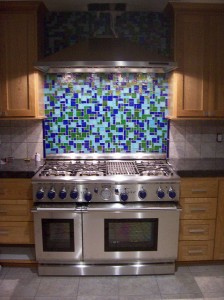Range Hood Fans Can Be Dangerous
1 Comment | Posted by armchairbuilder in Owner-Builder, Quality Check
Recently one of my customers asked if he could supply his own commercial grade fan over his range. After all, he does own his own restaurant and they will be cooking up some big meals in the new home. I asked him to get me the specifications for the fan so I could determine what type of vent would need to be roughed in as well as the electrical requirements. Now, listen carefully because most people wouldn’t think of this next item! I gave the fan specifications to my HVAC contractor so he could determine if we would create any pressure problems by installing the fan. When you have a large fan sucking air out of your home, you create a negative pressure in your home. Meaning, the pressure on the outside is higher than the inside. This can create a whole host of problems.
The most dangerous problem associated with large pressure imbalances in a home is flue backdrafting. If the inside of your home is at a significantly lower pressure than the outside, the flue for your furnace, fireplace, hot water heater…etc. may backdraft causing harmful fumes to come back into your home. Basically, the high pressure air outside moves toward the low pressure air inside…this is the same principle that causes wind in nature. The air movement through the openings in your home (i.e. vents) will slow down the dangerous gases venting out of your fuel burning appliances potentially causing a backdraft into the home. I’m sure I don’t have to tell you how serious this can be. Other problems that can be created by air pressure imbalances include water infiltration and energy losses.
So, how do you solve the pressure issue? You need to work with your HVAC contractor to create a mechanical air intake that will balance the pressure between the inside and outside of the home. You have several options, one is to use a powered fresh air intake that will pull air in from the outside only when necessary. This can typically be installed for $325-400 or so (labor and material). If you want a more efficient means of bringing in fresh air, you can use what they call a heat exchanger. These exchangers transfer heat (or cold) between exhaust air and intake air to bring the intake air temperature closer to the temperature in your home. These air exchangers can also help with excessive indoor humidity, odors, indoor air pollutants, and helps reduce heating and air conditioning costs.



[…] Consult your contractor and see what options are available for your home and kitchen style for setting up an automatic damper. Somehow, you’ll need to get adequate ventilation to prevent backdrafting harmful exhaust into your home, and a competent contractor should be able to wire a solution for you. Then, you can have that big range hood and vent it too. If we haven’t completely answered your question, How can you get carbon monoxide poisoning from a range hood?, you may want to check out a previous Armchair Builder article titled, Range Hoods Can Be Dangerous. […]